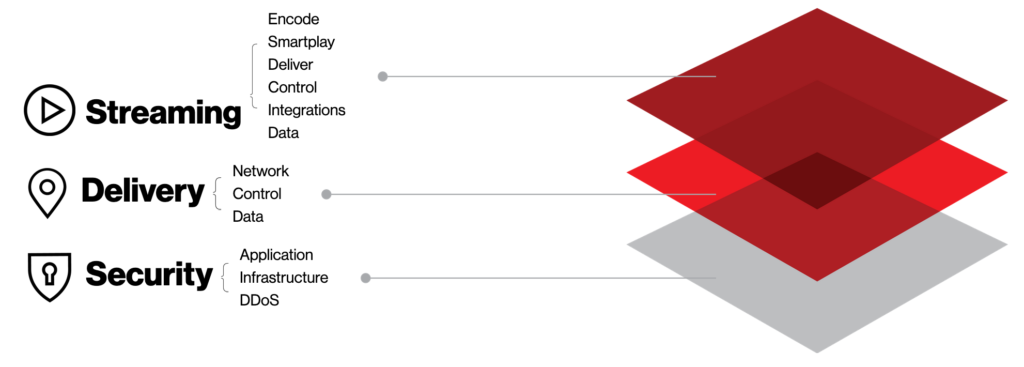M+E Connections

Verizon Media Touts Latest Platform Enhancements
Story Highlights
Verizon Media spotlighted several of the latest enhancements that have been made to the Verizon Media Platform during a May 7 “OTT Innovation Showcase” webinar that included demonstrations of the new features and capabilities.
Verizon Media has “launched a range of capabilities to enable broadcasters, content owners and service providers to grow audiences and monetize content in new ways,” the company said while announcing a few of the new enhancements April 21.
The new features include advanced advertising tools that improve transparency in the bidding process and track ad performance. Verizon Media Smartplay Prebid is a server-side integration that the company said “exposes inventory and conducts auctions faster with more demand partners using the prebid open-source framework.”
The “low-risk solution is easy to implement and opens up content owner supply to more demand partners, allows for fair market competition, and provides visibility into content value with price transparency,” it explained.
Verizon Media also enhanced advertising data and analytics to provide customers a deeper understanding of ad performance, it noted.
The company has “simplified every step” of over-the-top (OTT), “from encode to ad insertion to data so you can get to market faster and attract and retain audiences everywhere,” it said ahead of the webinar. Verizon Media’s integrated Media Platform was built on the “only global network architected and continually fine-tuned to deliver the highest quality, ultra-personalized TV-like experiences,” it noted.
 The Media Platform “consists of three integrated products that power our customers’ websites, applications and video streaming services,” Darren Lepke, head of video product management at Verizon Media, pointed out at the start of the May 7 webinar.
The Media Platform “consists of three integrated products that power our customers’ websites, applications and video streaming services,” Darren Lepke, head of video product management at Verizon Media, pointed out at the start of the May 7 webinar.
Those three components are: the Verizon Content Delivery Network (CDN), which he said offers over 100 terabits per second of global egress capacity—just a “massive amount of scale”—along with features that include “very robust analytics”; a full suite of security features including distributed denial of service (DDos) protection and bot mitigation because the Internet is “full of bad actors trying to bring your e-commerce site down” and “slow traffic to your apps”; and a streaming product that provides capabilities including end-to-end video workflow, encoding, encryption, personalized advertising and more.
Among the “key trends” that Lepke said are “driving the product roadmap decisions” that Verizon Media is making every day include the fact that, “first and foremost, there is no doubt that the COVID-19 pandemic is accelerating a massive shift already taking place in the industry” and “changing consumer behavior.”
Are viewers watching more video via websites and apps? “The answer is unequivocally yes,” Lepke said, adding: “Overall, the traffic on our network, our CDN and our video streaming platform is up. Live news is up. On-demand streaming of premium content is up.” Software downloads are also up as people are downloading more games and using more apps on their smartphones, he noted.
Among the few things decreasing are live sports and concerts, but – whether it is late this summer, fall or early next year – “we’re anticipating the return of sports and [other] live events, and we’re preparing for it now,” he told viewers.
 Emerging use cases are also “accelerating,” including social viewing interactivity and online wagering on live streams, which all “require new, real-time streaming capability, where latency is less than one second,” he said.
Emerging use cases are also “accelerating,” including social viewing interactivity and online wagering on live streams, which all “require new, real-time streaming capability, where latency is less than one second,” he said.
“The second big trend that we’re seeing is the collapsing of silos within media organizations,” he said, explaining: “In the past, you may have seen a broadcast group in one part of the building and a digital or OTT group in another part and maybe a marketing or social media team” in another part. “Each one of those teams have their own workflows, they have their own tools, they have their own processes. But we’re seeing these groups really coming together. OTT is not an experiment any longer. It’s part of the core business. Social media is no longer the realm of trailers and promotional content. We’re seeing some of the most valuable content being streamed on social media today.”
As media organization silos collapse, their “tools and the workflows are also coming together and our customers are asking our platform to do the same,” he said. And that has led Verizon Media to try and figure out “how can we help them really converge the worlds of television, OTT and social media into one simplified workflow that allows them to launch new products” and create new experiences, he said.
Verizon Media focused on four key areas it’s made innovations in during the webinar: Live event enhancements that simplify live event management to deliver more live events flawlessly: media delivery to scale organizations’ video business with Verizon Media’s performance; advanced advertising to refine organizations’ OTT ad strategies; and virtualized workflows to simplify organizations’ OTT strategies and gain more control.
In live events, Verizon Media powered millions of Super Bowl streams this year in 4K Ultra High Definition, Scott Goldman, director of product management at Verizon Media, pointed out. Just before that, the company “hit some major milestones” in streaming in January as it supported 3,470 events, including 337 events on a single day and “over 100 concurrent events at one time,” he noted, adding: “The Verizon Media Platform can now reach a capacity over 10 million concurrent viewers.”
 Verizon Media offers a self-service dashboard for live event operators to stop and start events, trigger ad breaks and create clips of the event. “The live event operator dashboard can be accessed anywhere with a browser and Internet connection to operate your event,” Goldman noted, adding: “Because the dashboard is decoupled from encoding, you can manage an event from anywhere in the world.”
Verizon Media offers a self-service dashboard for live event operators to stop and start events, trigger ad breaks and create clips of the event. “The live event operator dashboard can be accessed anywhere with a browser and Internet connection to operate your event,” Goldman noted, adding: “Because the dashboard is decoupled from encoding, you can manage an event from anywhere in the world.”
The dashboard has been updated with a new Live Event Markers feature that Goldman said “allow an event operator to tag certain portions of an event with metadata,” such as scoring plays or end of quarter breaks in a game. It efficiently publishes that metadata alongside the video streams, enabling content owners to design new features for on-screen overlays and interactivity, according to the company.
Mitch Lacsamana, solutions engineer at Verizon Media, demonstrated the new live events and other new features, including mid-session switching that he said “automatically switches the CDN for a session should a CDN degrade in performance or other switching rules aren’t met, ensuring that your end user will be provided the most optimal viewing experience without having to refresh in a playback session.” That is “especially relevant for live event streaming to large-screen OTT devices like Roku or Apple TV,” he said.
Mid-session switching is part of the company’s stream routing capability offered via its Smartplay session management technology that it introduced in 2017, enabling targeted ad experiences, server-side ad insertion and digital rights management.
Verizon Media’s Slicer software, meanwhile, is free and easy to set up, and the new Managed Slicer option takes control of moving an organization’s workflow to the cloud, Lepke said. Benefits of Managed Slicer include the ability for customers to “avoid the cost of buying and refreshing hardware,” he noted.
The company’s new Real Time Streaming is a standards compliant streaming service that it said delivers a broadcast quality, synchronous stream in less than one second, facilitating video experiences that support interactivity, gamification, eGaming and online betting. The main benefits include the ability to gain increased engagement, social interactions and increased revenue, according to Verizon Media.
Verizon Media also expanded on its established relationship with Microsoft Azure, launching its streaming platform in Azure Cloud, Lepke said.
“This new streaming product on Azure leverages Azure’s global footprint to accelerate the deployment of OTT and TV everywhere streaming all around the globe,” he noted, adding: “We’re working closely with Microsoft to bring new service offerings that integrate unique features from Azure to solve real-world issues for our customers.” An example of that is the “integration of Azure Video Indexer into our platform,” he said, pointing out Indexer uses artificial intelligence and machine learning “to generate … metadata for all of the content that gets ingested into our platform.”









